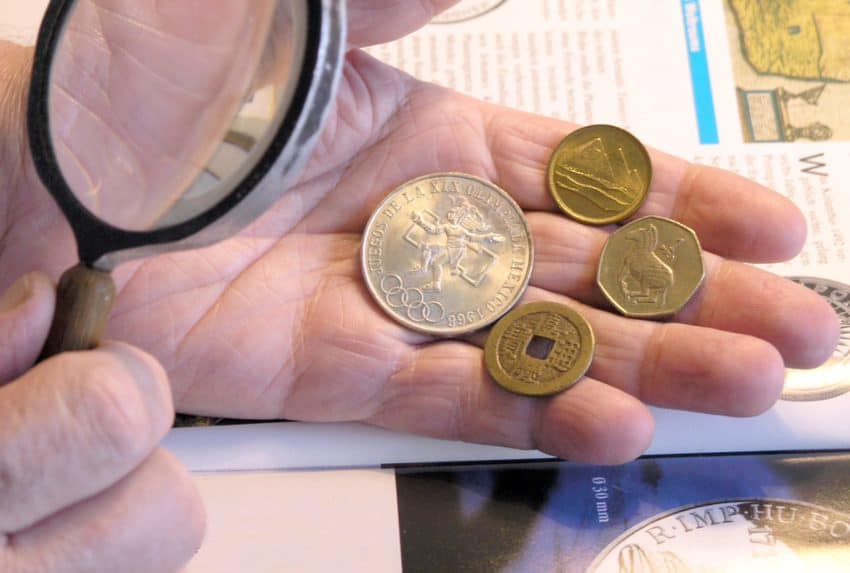
If you’re thinking about getting into coin collecting, then you’ve come to the right place!
This is a complete guide for beginners (that could also be read by seasoned collectors) on how to start your coin collecting the clean and efficient way!!
If you decide to join the ranks of millions of coin collectors, also known as numismatists, around the world, you may never look at pocket change the same way again!!!
Why coin collecting is a great hobby?
Coin collecting can be an enjoyable activity for those school age to nursing home and everything in between. As a lifelong hobby, you’ll grow along with it, expanding your collection and knowledge over the years.
It doesn’t require physical ability or perfect weather. You can do it at your own pace and on your own time. Aside from some basic knowledge and tools, there is not too much specialized equipment required (Check these Tools), and you can set your own budget.
The hobby can help you see the world if you decide to travel to acquire coins. Even if you only collect locally, it will expand your worldview through the amount of history you’ll learn.
One of the most rewarding aspects of the hobby is being able to hold in your hand pieces of human culture that have existed for centuries or will long outlive you. Understanding our societies through these small metal windows can be quite fascinating.
Coins are also a way of owning miniature works of art for those who appreciate the fine crafts of metal work, illustration, and sculpture.
Most importantly, you’ll be a part of a welcoming collector’s community who can’t wait to share their knowledge and excitement with you.
For more information on why this activity is great, have a look at this helpful guide!
How to Identify and Evaluate Coins?
Before investing in coins, you need to know coins as part a first step of the learning process. Let’s go over some of the basics to get you started.
If you start to get overwhelmed, don’t worry, you can always come back and review this information again. Learning about coins should be fun, and you’ll get more practice identifying and evaluating coins with time.
1. Coin parts
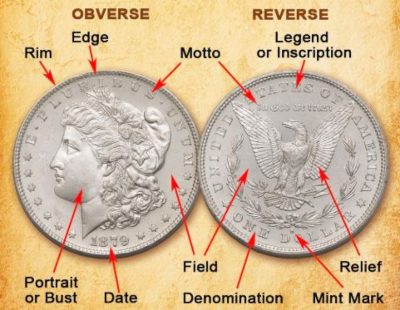
Coins have an obverse and reverse side. The obverse side is the “heads” or main side, often featuring a portrait. The reverse side is the “tails” or back side of the coin.
The edge of the coin is the flat side that runs around the whole coin. This is different from the rim, which is the raised lip connecting the coin’s edge with its surfaces.
The field is the flat surface of the coin that does not have any design or inscription. A relief is a coin’s design that is raised above the coin’s surface or field.
Aside from the design, a coin may have several inscriptions. The legend is the main inscription on a coin. A motto may also appear.
A coin may be marked with its weight and denomination. It may also have a date and mint mark indicating the mint where it was produced.
2. Grading coins
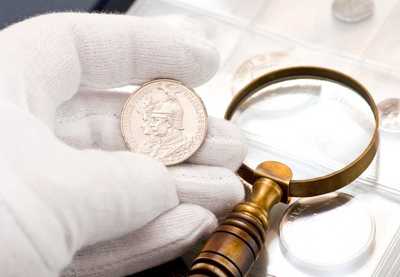
Coins are graded according to their condition, which affects their value. Even beginners should familiarize themselves with coin grades and how they are assigned.
Depending on the coin, there can be a huge difference in price from small variations in coin grade.
Grading coins takes practice so don’t expect to become an expert overnight. Thankfully there are books (Check these Coin Books) with detailed pictures as well as other friendly dealers and collectors to help you learn.
Professional grading services in the U.S. assign a numerical grade to coins according to the Sheldon scale, which is considered the industry standard. This scale goes from 1 to 70, with 70 being the perfect coin specimen.
Grades 60 to 70 are considered mint state coins that have not been in circulation. “About uncirculated” coins are those in grades 50 to 59. These coins may never have been in circulation but still show some signs of handling.
Anything grade 49 and below is considered a circulated coin. The coins also receive an adjective, such as good or very fine, according to their numerical score.
Grading ancient coins is not as technical due to their age and hand-struck nature, so it is standard for these to only receive an adjectival grade.
When purchasing rare or valuable coins, they should have been professionally graded and certified.
I highly encourage you to check this quick guide on how coins increase in value over time!
3. Tools for identifying and evaluating coins
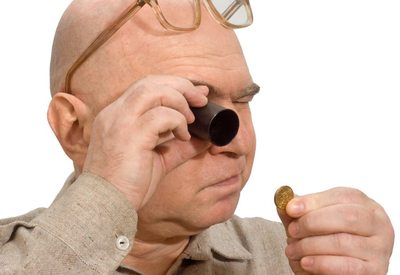
For the beginning collector, it will be helpful to have a 5x to 10x magnifier (Check it Here at Amazon) or loupe to inspect coins more closely. Some good task lighting, 75 to 100 watt or equivalent, will also be useful for examining your coins. Avoid fluorescent lighting.
Other tools to consider having on hand include a digital scale accurate to two decimal places and a clear plastic ruler in millimeters. These tools will be more necessary for those collecting ancient or world coins.
It really doesn’t take much to get started! However, I highly encourage you to have a look at this extended list of coin collection tools for more ideas …
4. Book recommendations
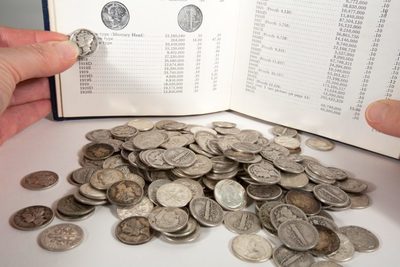
I know there’s a whole internet out there with information (including this site), but it really can be helpful to have some coin books on hand.
Books are filled with photos and detailed information, and their organized presentation can be friendlier to digest when you’re starting out. It can be easy to get lost down a rabbit hole of information on coin collecting.
Here are a few books I recommend:
- Whitman Guide to Coin Collecting: An Introduction to the World of Coins by Kenneth Bressett
- Coin Collecting for Dummies (Check it Here at Amazon) by Neil S. Berman and Ron Guth
- A Guide Book of United States Coins 2020 by Jeff Garrett
- Making the Grade: Comprehensive Grading Guide for U.S. Coins by Beth Deisher
Types of coins to collect
Probably the first question beginner coin collectors have is, “what coins should I collect?” With a world of options to choose from, it can certainly be a challenge to decide where to start your collection.
The most common categories for collecting coins are U.S. coins, ancient coins, and world coins. Let’s take a look at each of these.
1. United States coins
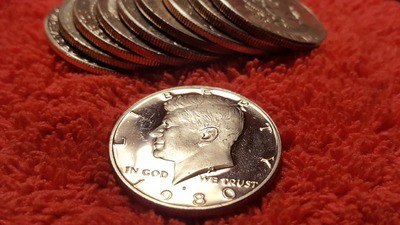
U.S. coins are the most common type of coin collection for American collectors. They are readily available and well documented.
There is an appeal to learning more about a shared American history, and collectors may also find they can relate more to the coins they see every day.
U.S. coins are generally divided into classic (pre-1934) and modern (1934 to present). Older coins are scarcer and have more history, making them more desirable for collectors.
You’ll be able to find detailed guidebooks and pricing information.
2. Ancient coins
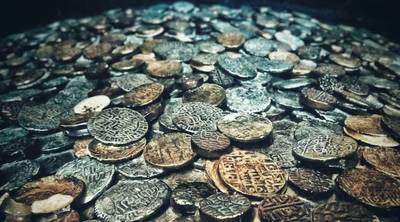
Don’t feel you have to be limited by the bounds of your country. If the history of coin collecting appeals most to you, ancient coins may be an excellent option.
Just think of holding centuries-old coins in your hands. Interestingly, because ancient coins are often of poorer quality, having been handled or exposed to the elements, you may not have to be as concerned about handling them.
Greek and Roman coins are the most common types of ancient coin collections. You’ll be able to find plenty of information on how to identify them.
Coins from these ancient civilizations were minted in great numbers so they are not always as rare as you might expect. There are affordable options for the everyday collector.
Ancient coins were often hand struck by metalworkers making them a unique piece of artistry. Greek coins in particular are known for their beauty.
Chinese coins are another option for ancient coin collections, though collectors should be wary of counterfeits.
To learn more about this aspect, you really should check this ancient coin collecting guide! You will learn a lot …
3. World coins
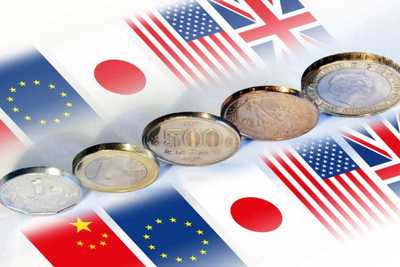
The options for world coins open so many doors to the collector. You could choose to collect coins from countries that interest you, countries from your heritage, or countries from your travels.
You might choose to focus on a specific region, such as Latin America or East Asia.
As long as you have a direction for your collection, it will be easier to become knowledgeable in an area and acquire coins that interest you.
World coins will give you greater variety in metal types, sizes, and designs. You’ll also be able to learn about the culture and history of other regions.
If you want to learn more about world coins, then, you just check this world coin collection guide! You will learn a lot …
Where to Start?
While we’ve reviewed several different options in which you can focus your collection, the good and bad news is it’s entirely up to you. Select what piques your interest, and you can always shift gears or expand over time.
For U.S. coin collectors, an easy way to get started is with type sets. This means you collect each major design of a particular denomination, such as the half dollar. You can also decide whether to collect coins with minor design variations.
Another type of set is each year minted of a particular series that interests you. Many beginners choose to start out with Sets of Lincoln Cents, Jefferson Nickels, Roosevelt Dimes, and Washington Quarters because they are familiar, budget-friendly, and a nice introduction into the hobby. You can even find some in your everyday pocket change.
Aim to purchase coins of a similar grade for your type set so the set will be relatively uniform. There are folders (Check Them Here at Amazon) you can purchase with spaces for each coin in the set if you will be collecting circulated versions.
It can feel like quite the accomplishment to complete one of these sets. The hunt is part of the thrill of coin collecting.
Tips for buying and selling coins
Alright, if you’ve chosen an initial focus for your collection, how do you go about buying your first coins? There are a couple more steps to getting reputable collector’s coins in hand so don’t click “buy” just yet.
1. Setting a budget
Before you purchase any coins for your collection, you’ll want to set a budget for buying coins. Try to think long-term. How much do you plan to spend on coin collecting this year? What about over the next five years?
Knowing your budget in advance will help you make smart decisions. You don’t want your hobby to keep you from putting food on the table so keep track of your spending.
Thankfully, there are a wide range of options for coin collecting to fit practically any budget. Common advice is to save up and make a few special purchases rather than amassing a really large collection of lower quality, but that’s really up to you.
2. Finding a trusted dealer
Having a trusted dealer will help you feel confident in your purchases. Get recommendations from fellow collectors and check out the dealer’s business record, including the Better Business Bureau and online reviews.
You’ll want a dealer who doesn’t mind taking their time to show you things and isn’t annoyed by questions. You should be able to browse at your own pace and not feel pressured to purchase.
The dealer-collector relationship can be mutually beneficial if you find the right fit so feel free to shop around.
If at a coin shop, check whether it is recognized by the American Numismatic Association or Professional Numismatists Guild, which adds credibility.
3. Additional book recommendations
Here are a few more reference books you may find helpful:
- The Coin Collector’s Survival Manual (Check it Here at Amazon) by Scott A. Traver
- United States Coinage: A Study by Type by Ron Guth and Jeff Garrett
- 100 Greatest Ancient Coins by Harlan Berk
- 2020 Standard Catalog of World Coins 1901-2000 by Tracy L Schmidt
How to clean coins?
In a word, don’t! Seriously, if you are a beginner collector you should not attempt to clean coins. Cleaning coins can completely ruin their value.
Professionals are able to spot evidence of coin cleaning, and you will be very sad to have lost your coin investment. Please don’t do it.
Really the only time you should clean coins is for ancient coins dug up from the earth. This situation does not apply to most coin collectors and is still a task better left to professionals.
How to store coins?
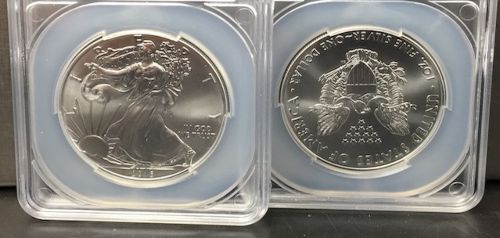
There are many options for coin storage. Generally, you want to match the level of protection to the grade of the coin.
For common circulated coins of high quantity, these may be fine in plastic tubes. For better viewing and protection, you can put them in cardboard folders with inset cutouts made for coins.
A next option up would be 2 x 2 cardboard flips that allow you to view both sides of the coin and can be inserted into coin albums (Check it Here at Amazon) with plastic sheets.
Higher-grade coins should be protected in cases or capsules, where they will be more protected from handling and the elements. I recommend having coins worth more than $250 professionally graded and encapsulated.
Make sure to always buy archival quality storage materials so the plastics and papers will not leach chemicals that damage your coins over time.
Keep your coins in a cool, dry location away from sunlight for optimum protection.
I’ve talked in detail about this aspect in this guide on how to store coins properly!
How to organize your coin collection?

As your coin collection starts to get larger, you’ll want to have a good organization system in place. How you organize them is really up to you.
For U.S. coins, common organization methods include by denomination, type, or time period.
For world or ancient coins, you might organize by country, region, or time period. You could even organize them by type of metal, shape, or size.
Organizing and reorganizing your collection can actually be a pretty fun task. It’s when you’ll get a chance to look over the entirety of your collection.
Having a well-organized collection will help you appreciate it more and be able to share it with others easily. It’s good to keep a catalog or listing of the coins you own someplace, whether digitally or on paper.
Since coin organization could be a bit overwhelming, I’ve put together this guide on organizing efficiently your coin collection!
Challenges of coin collecting
Coin collecting is not without its drawbacks, which are important to understand before diving into any hobby. As I mentioned, you do want to educate yourself on the basics and continue to learn as you advance in your collecting.
Beginners can risk purchasing fake or overvalued coins by mistake. There is also a risk of devaluing their coins through mishandling.
The hobby can be frustrating if you lack the budget to purchase the types or quality of coins that appeal to you. Later in the article, we’ll go over how to set your budget and how to work with a low budget.
Coin collecting also requires some tools and safe storage space, which I’ll describe more.
A potential risk is the addictive nature of coin collecting! You may find it consumes more and more of your free time and disposable income, though this can be true of any enjoyable hobby.
What beginners should know about special coin types
There are a few types of coins that merit their own discussion. You’ll want to know what these are so you can consider them when building your coin collection.
1. Error coins
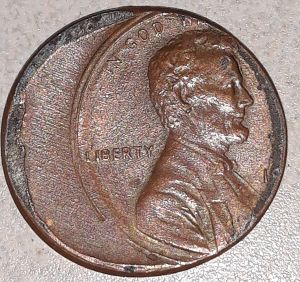
The machines that strike coins malfunction and make mistakes. They may get dirty and make marks that shouldn’t be there. The coin may fail to be ejected and get struck twice, called a “double strike,” which can make strange effects.
Some of these coins slip out into circulation and others never make it out. They are rare and interesting, and therefore often prized by collectors. There are error coins floating around out there today so keep an eye out.
Some error coins are valuable and others may not be.
For more information, try the book, Strike It Rich With Pocket Change: Error Coins Bring Big Money by Ken Potter and Brian Allen
2. Uncirculated coins
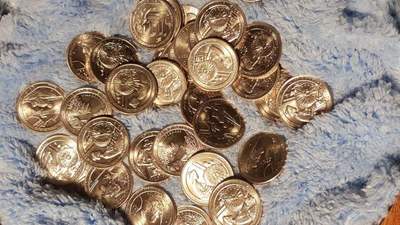
You can purchase uncirculated coins directly from the U.S. mint or from coin dealers. These coins have not been released to the public for everyday use, though they are still legal tender.
Uncirculated coins are often early strikes from dies and receive cleaning and special packaging.
These coins will be in mint state and of a high grade, often fetching greater value over time.
To learn more about these coins, you should have a quick look at this uncirculated coins article!
3. Proof coins

Proof coins are special in that they are struck at least twice under high pressure, bringing out greater detail in the coin design. The field of the coin will have a mirror-like finish.
Proofs are exemplary coins that are highly prized by collectors. They are available for purchase directly from the U.S. mint.
They take more time and effort for the mint to produce, so there are fewer of them created.
Because they are less common and very detailed, they will be worth more than a standard uncirculated mint state coin.
4. Medals and tokens
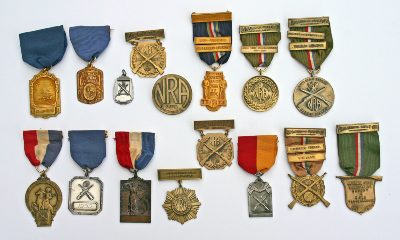
Medals and tokens are not legal tender, but they are metal discs that are struck to commemorate a specific event or person. Because of their similarity to coins, some coin collectors choose to include them in their collection.
Others collect medals and tokens exclusively.
There are so many options, from Olympic medals to Civil War tokens and everything in between. Medals and tokens have value for collectors, and many find the special historical nature appealing.
To get started, consider a copy of The Official Red Book: A Guide Book of United States Tokens and Medals.
Fun facts about coin collecting
Did you know King Louis XIV, John Quincy Adams, and Thomas Jefferson were all coin collectors? The first recorded coin collection belonged to Augustus Caesar, the first Roman emperor. Add popes and other historical figures to the list of coin collectors (there’s a reason it’s known as the hobby of kings).
The first coins are 2,700 years old, giving clues to ancient civilizations.
One of the rarest coins in the world, a British coin known as the double leopard, is over 600 years old. One of only three known specimens in existence was found by a metal detecting hobbyist in 2006.
The first dollar ever issued by the U.S. government was the 1794 silver dollar. One sold for $10 million at auction in 2013.
The average penny remains in circulation for about 40 years.
The familiar metal smell of coins actually comes from the breakdown of skin oils from the people who have handled them.
The last fact I have for you (I don’t know how fun it is) is that coin collecting is not by any means a dying activity!
Final Thoughts!
Now that you’ve got the basics down, what are you waiting for? The coin collecting hobby is one many people cherish over a lifetime and even pass on their passion to the next generation.
Try attending a coin event to get immersed in the world of coin collecting. Chances are you won’t look back!
Finally, if you are looking for quick coin hacks, then I highly invite you to check these Coin Collecting Tips!
